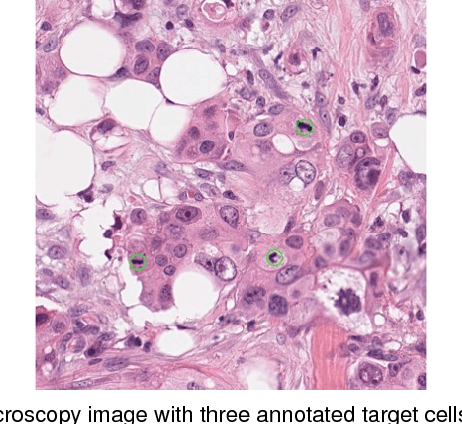Judith Hugh
Training Convolutional Neural Networks and Compressed Sensing End-to-End for Microscopy Cell Detection
Oct 07, 2018



Abstract:Automated cell detection and localization from microscopy images are significant tasks in biomedical research and clinical practice. In this paper, we design a new cell detection and localization algorithm that combines deep convolutional neural network (CNN) and compressed sensing (CS) or sparse coding (SC) for end-to-end training. We also derive, for the first time, a backpropagation rule, which is applicable to train any algorithm that implements a sparse code recovery layer. The key observation behind our algorithm is that cell detection task is a point object detection task in computer vision, where the cell centers (i.e., point objects) occupy only a tiny fraction of the total number of pixels in an image. Thus, we can apply compressed sensing (or, equivalently sparse coding) to compactly represent a variable number of cells in a projected space. Then, CNN regresses this compressed vector from the input microscopy image. Thanks to the SC/CS recovery algorithm (L1 optimization) that can recover sparse cell locations from the output of CNN. We train this entire processing pipeline end-to-end and demonstrate that end-to-end training provides accuracy improvements over a training paradigm that treats CNN and CS-recovery layers separately. Our algorithm design also takes into account a form of ensemble average of trained models naturally to further boost accuracy of cell detection. We have validated our algorithm on benchmark datasets and achieved excellent performances.
 Add to Chrome
Add to Chrome Add to Firefox
Add to Firefox Add to Edge
Add to Edge